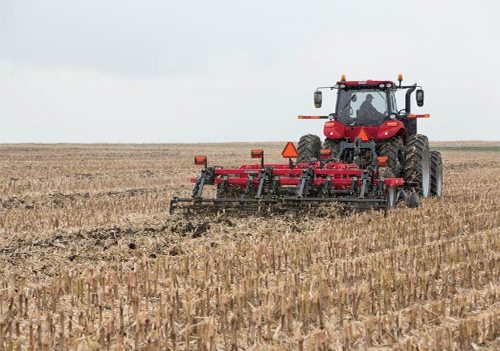
Fall tillage can help lay the foundation for next season’s production. But one tillage plan with a single implement might not be best for every field. A more prescriptive approach can help ensure better returns on your investment.
Done right, fall tillage can benefit your operation in several ways because it can:
- Help spread the spring workload
- Incorporate fertilizer and manure to help maximize nitrogen values
- Reduce soil compaction compared to tillage in spring, when soils tend to be wetter
- Chop crop residue to prepare for planting equipment
To do fall tillage right, you should consider several factors — some beyond your control — before setting a plan. Extension specialists at Iowa State University recommend evaluating soil conditions, including texture, drainage, slope and organic matter, and management factors, such as crop residue, crop rotation, fertilizer program, etc.1 For example, it’s important to maintain at least 30 percent crop residue cover after planting.2 That may be more difficult — and more important — on hillsides. On highly productive areas, you may put more emphasis on achieving properly sized residue.
To do fall tillage right, you should consider several factors. Via @Case_IH CLICK TO TWEET
Equipment options
Thanks to Case IH Agronomic Design™, our diverse lineup of tillage tools features options suited to your individual fields and management goals. From deeper cutting and mixing to vertical tillage to strip till, our rugged, versatile implements will meet your specific needs.
True-Tandem™ disk harrows. Since the 1970s, Case IH has led the industry in tandem-disk technology. With our True-Tandem design, blades in the rear gangs track directly between the cuts of the front gangs for a true full-width cut, leaving no uncut gaps. That’s especially important when slicing through and properly sizing tough crop residue. Optional rolling-basket or harrow attachments help produce more uniform clod sizing and residue distribution.
Vertical tillage. Case IH vertical tillage is the fast and efficient way to cover many acres, manage crop residue and level the soil in either the spring or fall. Patented blades move soil and residue up, down and laterally to slice, size, mix and level fields. An important advantage for fall work, our vertical tillage equipment effectively sizes tough Bt corn stalks, breaks up corn root balls and integrates the residue into soil to promote breakdown.
Strip-till. If minimal soil disturbance with maximum crop residue cover is your goal, our strip-till toolbar is your best option. The Case IH toolbar prevents plugging and provides smooth residue flow while creating consistently shaped berms, no matter the residue cover or terrain. It’s ideal for fall anhydrous ammonia applications but also can be used to perfectly place dry or liquid fertilizer in the root zone.
Fall can be an unpredictable season. Talk with your Case IH dealer about the best tillage options for your varying soil types and field conditions. Then, when your crop is out, you’ll be ready to go to work on next year’s crop.
Source : CASE IH